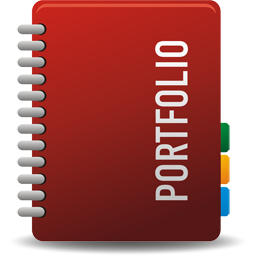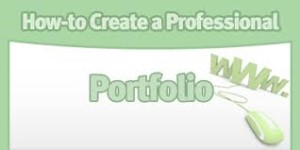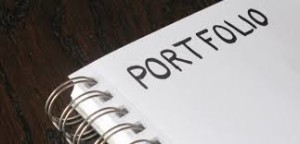
Image credit:thegypsynurse.com
Your professional portfolio as well as branding statement resume or c level resume is a major career asset, and you do need to know how to manage it effectively. A professional portfolio is said by many experts to be an art form as much as a professional asset. A professional portfolio may need to be adjusted to match the requirements of multiple different job applications.
How to make a professional portfolio – Hard copy materials
Depending on your profession, you will need to create a working archive of portfolio materials to manage the requirements of different jobs. If you’re a graphic artist, for example, you will need to create a range of materials to provide examples of your work in commercial art and other artistic types of work.
Best practice is to create a systematic archive of your work, in combination with your other professional credentials.
This is how to go about creating a professional portfolio archive using hardcopy materials:
- Collect samples of your work.
- Make copies of your work for use in your portfolio. (Do NOT use original works and materials as part of your portfolio. Original should be preserved separately.)
- Systematically organize your portfolio into types of work, categorizing according to type of work, class of contract, or other useful categories.
- Maintain your archive, filing copies of your work and systematically building your resources to create portfolios as required.
[ad-9426960]
How to make a professional portfolio – Online portfolios
An online professional portfolio is a must-have in most professions. Depending on your materials, an online presence can be a major business and career asset. It’s easy to manage materials online, and you can also keep your portfolio up to date pretty easily.
Making an online portfolio is very straightforward. You use the same basic principles as for hard copy, but in this case you create digital copies as well. You maintain your digital archive in the same way.
For example, if you’re a graphic artist, you take a scan or photo of your graphic materials as your digital reference. You post your new portfolio materials online and keep a backup copy. It really is that simple.

Image credit:www.ebloggy.net
The other half of your portfolio – Credentials and qualifications
Managing materials is one thing. Managing professional qualifications, credentials, and business materials is another. As a matter of fact, the management of credentials and qualifications is quite similar to managing the actual portfolio.
It needs to be understood that these materials, which may include a very wide range of documentation, also need to be very well organized.
Your credentials and qualifications may include:
- Statutory credentials in relation to working with particular types of professional materials
- Qualifications and related certifications
- Credentials like awards, academic credits and honors, and similar professional kudos.
- Relevant information regarding prior employment, contracts, or other freelance references
As you can see this is a moving target of information. This information will change and evolve over time. Managing your portfolio information in this regard is absolutely critical.
Best practice is pretty straightforward, but you must be particularly careful to ensure that you have instant access to all materials you need, when you need them.
This is how to manage your “official” portfolio materials:
- Take copies of all documentation and put the originals in a safe secure place.
- File your copies systematically, so that you know where to find everything you need easily.
- Always update your portfolio materials ASAP. This saves you from creating a backlog and having to play catch up with your own professional and business records.
How to use your professional portfolio
Using a professional portfolio also requires a bit of thought and understanding. The fact is that will need to provide a range of materials for any job for which you apply. You can’t really use a generic portfolio for a job application. Each job is different; every employer has different expectations and requirements. The best way to approach this is to create a specific combination of portfolio materials for every job.
The best way to organise your professional portfolio when applying for a job is to systematically check employer requirements of job criteria. You can use your portfolio materials selectively, to match each requirement.
As a matter of fact, it’s best practice to methodically cross-reference each portfolio element that you use with a specific job requirement. This avoids repetition, and also makes sure that you quality check your application before sending it in to the employer.
Create a checklist of materials required. This checklist can be derived from the job application and any information you receive from the employer. Simply tick off the checklist as you provide materials for each of the criteria.
Critically important – Make sure that your resume and your portfolio materials are well integrated. Your resume should show references to your portfolio work. This makes it a lot easier for the employer to reference your information. If you’re using an online resume, use descriptors, titles and other information to show the relationships between your resume and the portfolio.

Image credit:formwelkin.com
The big Don’ts when using a professional portfolio
There are several classic mistakes it is possible to make when using a professional portfolio. These can be real disasters, and you are strongly advised to be well aware of the possibilities and risks.
These are the big Don’ts:
- Do NOT simply put together a sample bag of portfolio materials. Unless your client is looking for very basic work, this type of portfolio materials will not be good enough.
- When using hardcopy materials, always check the materials for any wear and tear, or signs of deterioration. Never send a potential employer any materials without checking them first. Remember that presentation and quality of materials is extremely important with any portfolio.
- Make sure that you do not send inappropriate materials with your job application. It is quite common for archival portfolio materials to contain unwanted or even embarrassing materials.
- Do NOT simply assume that portfolio materials will be acceptable, if it’s unclear what materials are required. If you’re not sure what materials you should be providing the employer, ask. Better to send nothing than to send the wrong thing.
You will find that your resume will be a major asset three out your entire career.

